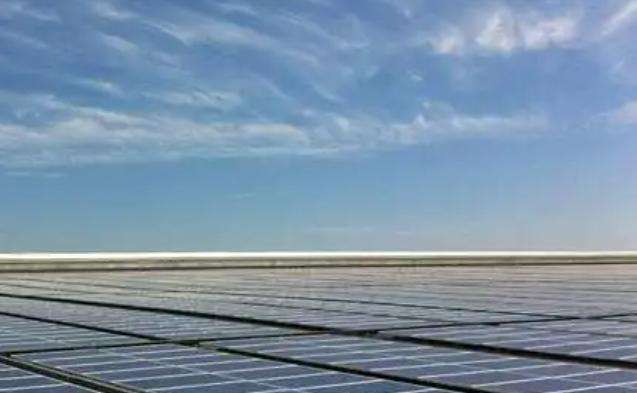Solar lights are an eco-friendly and energy-saving product, so what are the reasons and repair methods if the solar garden lights won't turn on? Let PChouse give you the answer?
Common reasons why solar garden lights won't turn on are: 1. Solar power is not charging and the battery is dead; 2. The battery itself is damaged and cannot be charged; 3. The LED lamp; the beads are damaged and cannot light up.
1. During the day, observe whether the lamp's charging indicator flashes. If it's not flashing, it means the solar panel or its wiring isn't charging, or there may be a short circuit. in the battery and its circuit. If it flashes normally, that means there is no problem with the solar panel and its wiring.
2. If the charging light flashes normally, you may find a faultin the battery part. At this time, you need to open the lamp housing and check the battery. Check if the battery is bulging or cracked. During maintenance, the battery is bulged and cracks represent 70% of the time. This fault indicates that the charging light flashes normally when charging during the day. The light just won't turn on.
3. The LED lamp beads on the lamp board are partially damaged. There are obvious black spots on the damaged LEDs. If the black spots are not obvious, you can use the buzzer setting of the digital multimeter. suspicious LEDs. Take measurements. The positive test lead is connected to the positive pole of the LED and the negative test lead is connected to the negative pole. The normal LED will light up if it does not light up, it means it is damaged.
I want to use a solar cell (75V, 1A) to charge the battery. The battery requiredite a charging voltage of approximately 17V. I need to increase the current. I do not know how to do. .
The battery may be exposed to sunlight. This will cause battery failure or explosion.
There are many types of batteries, the most common are dry batteries, lead-acid batteries, lithium batteries, nickel-metal hydride batteries and nickel-cadmium batteries. The above battery types are all rechargeable batteries except dry batteries.
Whether it is a rechargeable battery or a dry battery, you must use it according to the instructions on the battery if you violate the instructions and place the battery in an environment to higher temperature (for example by exposing it to high temperatures). the sun), this could result in a breakdown or explosion and endanger the safety of people.
There are many types of batteriesdry batteries, including alkaline dry batteries, zinc-manganese dry batteries... Most of the AA batteries and AA batteries commonly used in life are alkaline dry batteries, and dry batteries are not. rechargeable. Dry batteries contain a small amount of electrolyte inside, and the outer shell is equipped with breathable micropores. Therefore, when a dry battery is exposed to sunlight, the battery temperature rises and the internal electrolyte volatilizes, causing the battery to fail.
Lead-acid batteries, nickel-metal hydride batteries, and nickel-cadmium batteries are rechargeable batteries that contain electrolytes inside and have breathable micropores in the outer shell. These micropores can ensure that the gases generated from inside. Battery chemical reactions are released during charging and discharging. However, if the battery is placed in ahigh temperature environment (exposure to sunlight), the high temperature will cause the internal electrolyte to evaporate through the breathing micropores, causing the battery capacity to decrease, causing the battery to prematurely fail.
There are many types of lithium batteries, including ternary lithium, lithium phosphate, lithium polymer... Like those commonly used in mobile phones, they are all lithium batteries. Lithium batteries are rechargeable batteries with a fully sealed shell, so this battery is subject to high temperatures (When exposed to sunlight, the internal electrolyte will volatilize and nowhere can be released, which can easily make the internal pressure of the battery too high and cause an explosion
Since the different phenomena that occur when different types of batteries are exposed to sunlight.l, listed above, it appears that placing the battery in a high temperature environment can lead to terrible consequences of breakdown or explosion. use of the battery It must be used in strict accordance with the instructions indicated on the battery.
Only DC/DC mode can be used.
The 75V voltage of solar panels is relatively high and there is no dedicated DC/DC chip that can operate at this voltage.
An external transistor is required. You can search for tours on Baidu.
The charging current is determined by the efficiency of the DC/DC converter. Charging current = 75*1*/17*efficiency
For example, the efficiency of DC/DC converter is 70%, then the maximum charging current when the output is 17V is: 75*1/17 *0.7= 3A
Also: Your charging voltage of 17V is obviously wrong. In your case you should have a 12V battery. The voltage ofMaximum charging of a 12-inch battery is 14V. Usually, the charging voltage in constant voltage and current limiting mode is 13.8V. Excessive voltage will cause the battery to swell or be damaged.
If the charger voltage you measured is 17V, the charger may have a power frequency transformer structure and the no-load voltage is higher than the load voltage, and such a charger cannot be used for a long time. It must be removed in time, otherwise the battery will be damaged. The 13.8-14V constant voltage and current limiting charging circuit does not need to be disconnected in time.














